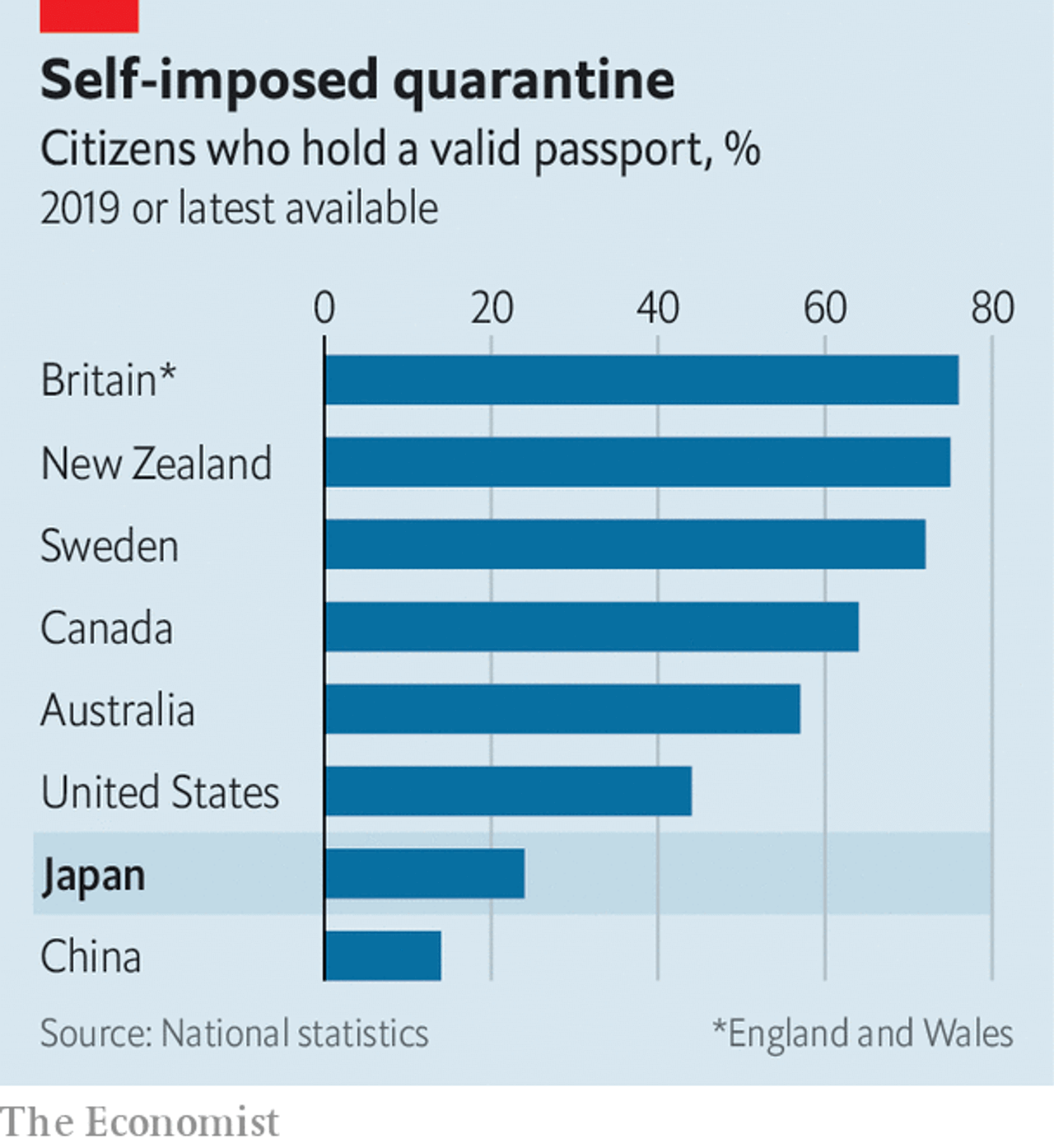本期经济学人杂志【亚洲】板块下这篇题为《Fewer and fewer Japanese want to see the world》的文章分析了近年来越来越少的日本人去海外旅行的原因。
日本每年有大约 2,000 万人次出国旅行,但持有护照的人口比例从 2015 年的 27% 下降到了目前的 24%,这一比例是发达国家中最低的,只有美国的一半。
有日本学者认为,近年来日本人海外旅行热情不高的原因主要有以下几个方面:日本人年假很少,担心安全,国外食物难吃以及担心产生不被别人理解的窘迫等。
上世纪 80 和 90 年年代,那时候日元强势,日本人热衷进行海外的短途旅行。但现在缓慢上涨的工资和疲软的日元使日本人减少了出国旅行。
此外,出国读书的学生人数也变少了,从 2004 年顶峰时期的 83,945 人减少到 2016 年的 55,969 人。主要是因为国外学费太高,以及由于日本劳动力不足 [labour crunch],海外读书对找工作的帮助也不是很大。

Fewer and fewer Japanese want to see the world
The endangered tourist
Fewer and fewer Japanese want to see the world
Only 24% of them even have a passport—the lowest proportion among rich countries
Asia
Feb 27th 2020 edition
Feb 27th 2020
TOKYO
NO FEWER THAN 191 countries admit Japanese visitors without a visa. That is twice as many as wave through Kuwaitis, for example, and five times the number that let in Nepalese without hesitation. By that measure, Japan’s chrysanthemum-decorated passport is the most welcomed in the world. Yet only 24% of Japanese possess one—about half the proportion of Americans who have a passport (see chart). Why do so few Japanese take advantage of their freedom to wander the globe?
On paper, Japanese are venturing abroad more often. They went on roughly 20m overseas trips in 2019, up from 19m in 2018. But that figure is inflated by people travelling for work and by frequent flyers. The share of people who hold a passport has been slowly falling, from 27% in 2005. Morishita Masami, who chaired a government committee to promote outbound travel, estimates that at least two-thirds of Japanese are lukewarm about the idea of leaving the country. Several factors deter them: miserly annual leave, concerns about safety, the inferiority of foreign food and, most of all, a crippling fear of the embarrassment of not being understood. Sluggish wage growth and a weak yen have made travel less affordable. Even pensioners, who have plenty of free time and disposable income, are travelling less.
In the 1980s and 1990s Japanese were keen to explore the world. Students backpacked for weeks with their copies of Chikyu no arukikata (“How to walk the Earth”), a popular travel guide. A strong yen made foreign jaunts affordable. But interest has been dwindling since the late 1990s. They are “just one of many” leisure options, Ms Morishita explains.
The number of Japanese studying abroad has also fallen, from 82,945 at its peak in 2004 to 55,969 in 2016. The shrinking population of young people is partly to blame. Also, “It costs about ¥4m ($36,000) a year to study abroad,” notes Nakamura Tetsu of Tamagawa University, a prohibitive sum for most. Meanwhile, Japan’s labour crunch makes foreign study less useful. “You don’t need an education abroad to get a good job,” says Suematsu Kazuko of Tohoku University. A survey in 2019 found that 53% of Japanese students are not interested in studying abroad, the highest ratio among the seven countries covered.
This article appeared in the Asia section of the print edition under the headline"The endangered tourist"
Reuse this content
